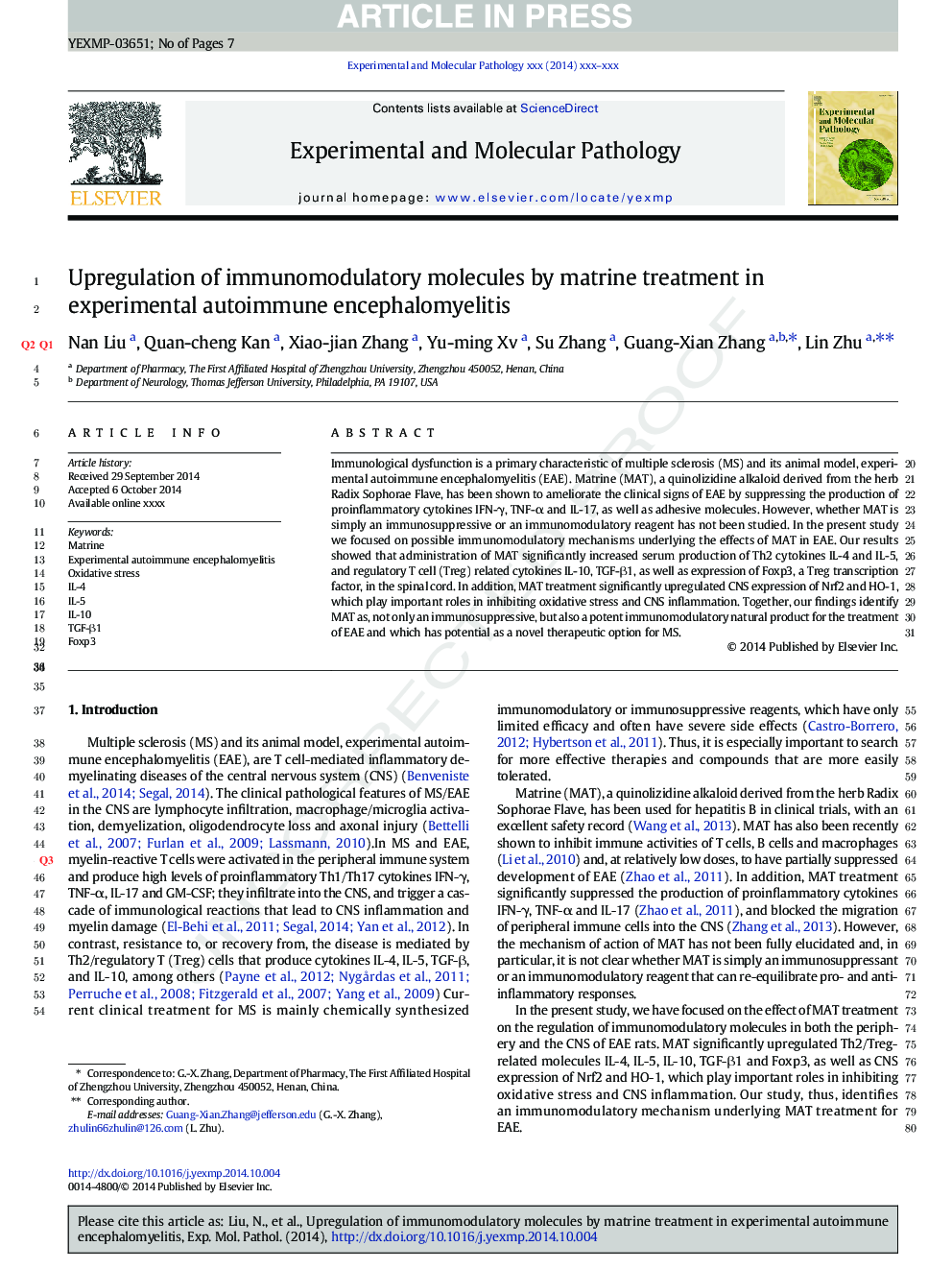| Article ID | Journal | Published Year | Pages | File Type |
|---|---|---|---|---|
| 5888108 | Experimental and Molecular Pathology | 2014 | 7 Pages |
Abstract
Immunological dysfunction is a primary characteristic of multiple sclerosis (MS) and its animal model, experimental autoimmune encephalomyelitis (EAE). Matrine (MAT), a quinolizidine alkaloid derived from the herb Radix Sophorae Flave, has been shown to ameliorate the clinical signs of EAE by suppressing the production of proinflammatory cytokines IFN-γ, TNF-α and IL-17, as well as adhesive molecules. However, whether MAT is simply an immunosuppressive or an immunomodulatory reagent has not been studied. In the present study we focused on possible immunomodulatory mechanisms underlying the effects of MAT in EAE. Our results showed that administration of MAT significantly increased serum production of Th2 cytokines IL-4 and IL-5, and regulatory T cell (Treg) related cytokines IL-10, TGF-β1, as well as expression of Foxp3, a Treg transcription factor, in the spinal cord. In addition, MAT treatment significantly upregulated CNS expression of Nrf2 and HO-1, which play important roles in inhibiting oxidative stress and CNS inflammation. Together, our findings identify MAT as, not only an immunosuppressive, but also a potent immunomodulatory natural product for the treatment of EAE and which has potential as a novel therapeutic option for MS.
Related Topics
Life Sciences
Biochemistry, Genetics and Molecular Biology
Clinical Biochemistry
Authors
Nan Liu, Quan-cheng Kan, Xiao-jian Zhang, Yu-ming Xv, Su Zhang, Guang-Xian Zhang, Lin Zhu,
